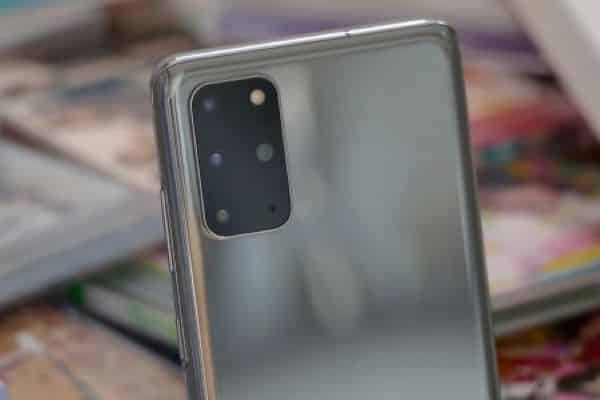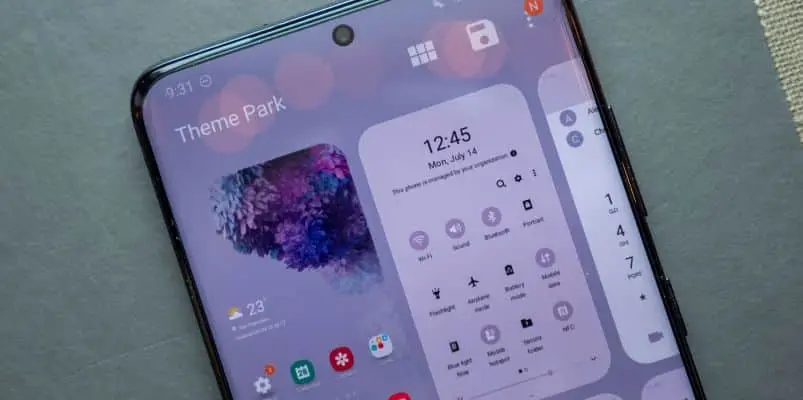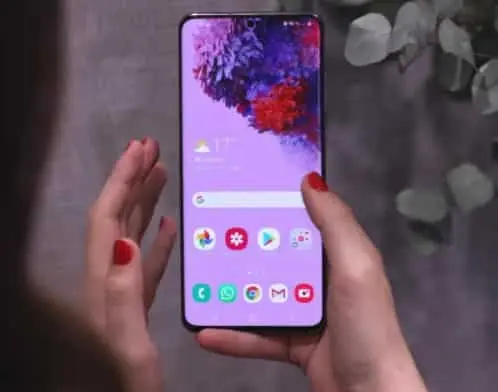With all the hype about the latest Samsung mobiles, if you want to get your hands on one of the models, it’s never too late. Samsung Galaxy S20 Plus is a high-performance mobile that acts as a benchmark for all the upcoming phones. Here is a review on the mobile for you to understand everything about it.
What you will see?
Samsung Galaxy S20 Plus
For the first time in years, Samsung’s most powerful Android phone is not a ‘Plus’ model of the Galaxy S series. Samsung Galaxy S20 Plus has an ‘Ultra’ edition. If you buy the Galaxy S20 you can save money, whereas the S20 Ultra can feel massive, pricey, and powerful. However, if you are looking for a middle ground, the Galaxy S20 Plus is the smartphone you should consider. The battery capacity, screen size, build, dimensions, and the camera is the major variations between the three variants.
Pros
- Stunning display
- Improved camera quality
- Impressive UI
- Smooth interface
Cons
- Dated back design
- Slow in-display fingerprint scanner
- Battery life could be better
- Exynos variant not powerful
Release date and price
The Samsung Galaxy S20 Plus is available in the 4G variant that has 8GB RAM and 128GB internal storage in some countries. Whereas others have the 5G variant. You can buy it from Samsung online/offline stores and hundreds of other partner stores. Moreover, you can even buy it from
Design

Samsung Galaxy S20 Plus only has minor adjustments in terms of appearance and feel. The front has a single hole for the camera, curved corners are no longer present, and a new rectangular camera block has been added to the upper left corner. The curved edges were a great addition to the series, but removing them does not make sense. However, the design is more refined and less obtrusive than the other models. Although, if you compare it with the intimidating camera module on the S20 Ultra, you might feel that something is lacking. The rear is plain and subtle and doesn’t reflect any gradient finish. This gives it a sleek and premium look, however, it’s mostly glass and very slippery.
The design is very minimal, there’s no Bixby button, no 3.5mm jack and the rear-mounted fingerprint sensor is also absent. When compared to the S9’s design, the camera module has come a long way in just two years. The well-packed glass and metal body is slim and easy to use with one hand and has a good grip in both directions.
Display

Samsung’s decision to build a smaller punch hole for the front camera is commendable. It makes the phone’s front look a lot cleaner and less cluttered. The 6.7-inch AMOLED display is sharp and vivid, with WQHD+ quality (3200 x 1440). As the top and bottom bezels are slimmer, it is somewhat taller than the S10 Plus. Samsung Galaxy S20 Plus and the other models for the S20 series have a screen refresh rate of up to 120Hz. Moreover, this is slowly becoming standard on all flagship phones. Although, Samsung is the first company to introduce a non-gaming smartphone with a 120Hz refresh rate in the market. This refresh rate allows games with 120Hz support, as well as those with 60Hz or 90Hz support, to have smoother images. Apart from that, it gives silky smooth animations, fluidity in app navigation, and more enjoyable scrolling.
Moreover, because of its crisp and vibrant display with minimum blockage, watching movies and playing games is a pleasure. The in-display fingerprint sensor is, however, lacking this time. It’s not just slow most of the time, but it also has a hard time verifying the print. When you adjust the refresh rate to 120Hz, the mobile reduces the screen resolution from its maximum to save energy. Although, you would not notice any difference. While the Ultra version tries a lot of new things with its camera system, the standard S20 and S20 Plus are essentially evolutionary enhancements to their predecessors. It’s still the greatest all-around Android phone on the market, and it sets a high standard for the rest of Android phones to meet.
Camera

There are three back cameras on the S20 Plus, plus a ToF depth sensor. The main camera has received a noticeable boost. The ultra-wide sensor doesn’t appear to have improved significantly, but daylight images are stunning. The 64MP telephoto lens offers 3x optical zoom and up to 30x hybrid zoom. You’ll notice that it has a lens with a magnification of only 1.07x, which is the smallest increment practically achievable. Going beyond the optical zoom range may make things look muddy and lose detail, but if placed on a tripod, it can give you passable images up to 10x. Furthermore, at 20x and higher, there’s a picture-in-picture inset that reveals which area of the larger image you’re zoomed in on. This is a nice addition that other phone manufacturers can take note of.
The S20 Plus comes with enhanced night mode, highly saturated colours, and excellent daylight shooting capabilities. Its camera app has a good mix of interesting features and ease of use. Toggling between the front and back cameras can easily be done by swiping anywhere on the screen. Also, triggering the selfie camera timer is as simple as making a hand motion. Samsung has included its standard set of camera functions, such as Live Focus and Panorama. Single Take is a new function that shoots predicted photos in several modes. Select the finest photos after pressing the shutter button for 10 seconds, which cycles among the cameras and several of Samsung’s photo and video modes. This is a fascinating option for content providers.
Features
The S20 Plus has an 8K video recording feature at 24fps. Although, you won’t be able to appreciate the brilliance of 8K unless you have a monitor capable of such high resolution. At most, this will allow you to crop and edit video without sacrificing quality. In the meantime, 4K provides more frame-rate and zoom options, but you only get 10x video zoom. If you’re short on battery/storage or require highly stable shots, you can go for UHD at 60fps for videos. However, if you need incredibly stable shots, go for FHD or standard HD. The main camera sensor is a simple 12MP sensor, however, it’s reportedly 28% larger than the main sensor on the S10. The S20 performs admirably in low light. The front camera is 10MP, while the wide-angle sensor is likewise 12MP. The Galaxy S20 and S20 Plus produce excellent pictures, but there are a few things to keep in mind.
Samsung’s approach is to warm up the white balance, lighten shadows, and smooth out faces whenever possible. This isn’t everyone’s style, and can sometimes be irritating. Moreover, there’s no option to turn it off in standard Auto mode. There’s also a “Bixby scene detection” setting that, more often makes things worse. The great majority of these issues go away if you switch to Pro mode (turn off the beauty filters on the selfie camera) for a half-second. Even in Pro mode, with all the settings the camera simply produces a more neutral and detailed image. Although, it doesn’t have Ultra’s fancy folded lens with its prisms and mirrors. But still, you can get “lossless” zoom up to 3x, and it gives you the option to zoom all the way up to 100x. This all works primarily by cropping in on that big 64MP sensor.
Camera performance

The front camera of the S20 Plus is a single lens with a little cutout. Moreover, there is an improvement in camera quality over the previous model. Its front-facing camera removes unnecessary details and does aggressive skin correction and colour management. Thus, resulting in more detailed and realistic selfies. However, it still fails to catch details in low-light situations. When there’s enough light, the camera shines in both video and stills. The super steady mode produces impressively solid video footage, and the audio quality appears to have increased since the previous version. However, with super steady enabled, you can only record up to 1080p videos. It can serve as a stand-in for your DSLR when you’re on the go but don’t expect excessive zooming. When it comes to details, the camera suffers in low light. It may capture stunning images of skyscrapers or even a well-lit street where it recognises straight lines or angular items. But in low light, objects like trees and hills lose sharpness.
In Live focus mode, you just have to choose the correct degree of blur to keep everything looking natural. Edge detection is also quite outstanding in both movies and stills. The Night Mode is a significant upgrade over its predecessor. When kept stable under bad lighting situations, it can magically brighten up the image to produce useable shots with minimal distortion. Some flaws, such as overexposure, smoothing out faces and textures and some trouble with the autofocus are minor drawbacks. The majority of these issues appear to have been resolved in the latest version. If you’re a pro who needs more control and enjoys experimenting with new features, the S20 Plus will suffice.
Specs and performance
The specifications are top-of-the-line, including a 7nm Exynos 990 processor from Samsung, 8GB RAM, 128GB of internal storage, and a microSD card slot for extra storage. The performance is excellent, as it is with other S-series phones. When it comes to day-to-day performance, there isn’t much of a difference between recent flagship phones. It almost effortlessly handles all apps, games, and media. So whether you’re multitasking, processing photographs in Photoshop or Lightroom, or editing 4K films, the Galaxy S20 Plus can keep up. The fact that the Galaxy S20 and S20 Plus are the first commercial 5G phones is a big element of their marketing.
Aside from the larger screen, the larger battery is another incentive to choose the S20 Plus. It has a 4,500mAh battery compared to the S20’s 4,000mAh. All the models are powered by Qualcomm’s latest Snapdragon 865 CPU. Samsung is losing some of the disciplines it previously possessed when it comes to cramming on perplexing features. Although, you might feel Samsung’s ecosystem is a bit confusing if you are new to Samsung. Too many functions are only compatible with other Galaxy phones, and others, particularly Bixby, are at best mediocre. However, you have the ability to customize the aspects to your liking. Android and Samsung are both open enough to allow things that the iPhone would never allow. Samsung’s One UI interface’s basis is still solid. Its future, though, is clouded by Samsung’s announcement that it will only provide two major Android OS updates.
Hardware
The S20 has a striking resemblance to other recent Galaxy S phones. The back has the same curved glass, the edges have the same metal rail, and the screen is nearly bezel-less with only a small hole punch for the selfie camera. The most apparent difference is that Samsung moved the camera module to the side, allowing it to become large and rectangular. Although, the screen is slightly less curved on the edges than prior Galaxy phones. Samsung doesn’t offer a secure face unlock option because of the large, notch-free screen. Instead, beneath the screen is an ultrasonic fingerprint sensor. Although it’s a beat or two slower than other unlock techniques, it’s not enough to irritate anyone. Moreover, the headphone jack was dropped by Samsung this year. The S20 Plus comes with 512GB of storage. On the S20 series, three features stand out: new cameras, 5G speeds, and the ability to choose a 120Hz refresh rate on the screen.
Software

The Samsung S20 series comes preloaded with Android 10. So you get all of the excellent features that the current version of Android has to offer, including universal Dark Mode. Moreover, it has the Samsung apps and interface overlay bundled in its latest version of One UI. However, the software is more than just the user interface. You’ll get access to Live Caption, Digital Wellbeing’s Focus Mode, and increased security permissions. It even features Google’s gesture navigation, which means you can pick between Samsung’s gestures, Google’s gestures, or the old three-button navigation system. The One UI 2.0 doesn’t add anything new or noteworthy. Samsung’s software has come a long way in terms of refinement. It’s completely customizable, and the system-wide dark theme looks fantastic on the screen.
Aside from Google’s native apps, there are a few more pre-installed programmes that can’t be removed, such as Facebook and Netflix. Except for basics and the native Galaxy Store, AR Zone, Bixby apps, you can delete any Microsoft and Samsung apps. Swiping right from the home screen will reveal Samsung Daily. This has a combination of content, tools, and services. Bixby has been replaced with Samsung Daily, a customisable tab that can be used as a news aggregator, music discovery tool, radio, app and theme recommendation service, and some advertisements. You can reorganise and choose the cards, but there are only 13 options to choose from. Samsung One UI 2.0 offers a lot of options for icon arrangements and changes in the quick settings. The S20 Plus comes with 30 fast settings by default, with the ability to add more. It allows you to add, remove, and reorganise fast tools, but not to change the 4×4 layout. Similarly, the UI provides a plethora of theme-based customization options, including fonts, colours, lock screens and more.
Battery life and charging
The phone may easily survive a day in a routine workday that does not include excessive gaming or camera use. Whether you use your phone in performance mode or keep the refresh rate at 60Hz throughout has a big impact. Fast wireless charging and reverse wired/wireless charging are among the charging options. Samsung keeps to 25W charging, whilst the Ultra supports up to 45W. It takes about 1 hour and 5 minutes to charge from 0 to 100%, and it takes about 25 minutes to reach close to 50%. The Snapdragon 865 chipset in the worldwide variant is believed to be much more efficient.
Conclusion
The Galaxy S20 Plus is a well-packaged phone that may save you a lot of money over the superior S20 Ultra without sacrificing any of its features. It boasts a fantastic camera set, and its capabilities make it an excellent pick for content creators and artists. You will even have access to a gorgeous display to view the information. The software receives regular upgrades, allows for extensive customization, and has a number of useful features. The camera features and performance is outstanding. The only problem might be the over smoothening of your faces, but you can solve this by clicking pictures in the Pro mode. All of this compensates for the hefty price for the S-series. However, given the high price, it’s important to highlight that, even if we don’t compare it to the S20 Ultra, it looks expensive but doesn’t stand out. It has the latest hardware but not the fastest, and lasts a day but lacks the fastest charging technology.
Are you planning to buy Samsung Galaxy S20 Plus? Tell us in the comments section below.
Read More!
- Samsung Galaxy S21 Review-Samsung’s top-notch powerful smartphone!
- Operate Zoom in Accessibility on iPhone and iPad!
- Apple sells 10 million iPhone 6 and iPhone 6 Pluses
- iPhone 8 plus (5.5”) 2017 360 case- Best selling and top trending in 2020
- Use zoom on the iPhone 8 Plus and later models in the camera!

















